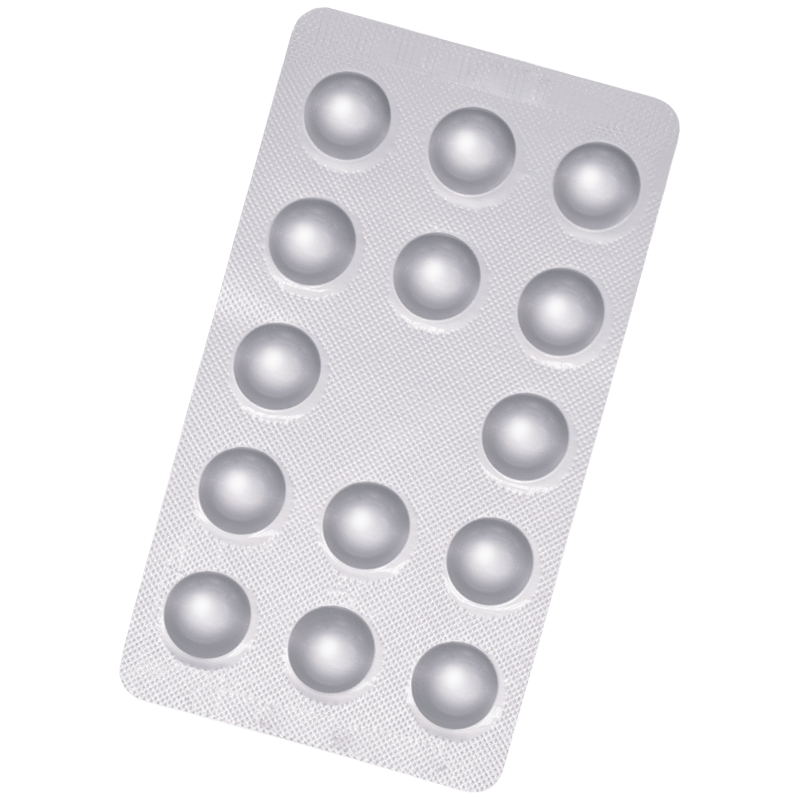The generic hair loss pill that’s cheaper.

Finasteride is the same as Propecia, but without the branding. It’s a hair loss pill that stops the hormone conversion in the body that causes male pattern baldness.
Get expert recommendations on hair loss treatment. Choose the option that suits you best, and order Finasteride online.
Finasteride is a treatment for hair loss in men, or male pattern baldness, as it’s sometimes known. It prevents hormone conversion in the body that causes hair follicles to shrink, triggering hair loss.
It’s also used to treat men with an enlarged prostate, or benign prostate enlargement (or BPH for short).
Sometimes Finasteride can even trigger hair regrowth, although it needs to be taken on a long-term basis for you to keep getting positive results from it.
Male pattern baldness is usually pretty easy to identify. You can start to lose hair from the scalp or top of the head, but it can also start at the front of the head, which is what’s known as a receding hairline.
There’s an enzyme in the body called 5-alpha reductase. It converts the hormone testosterone into another hormone, dihydrotestosterone, or DHT. DHT can make hair follicles shrink, and trigger hair loss, if your body is sensitive to it.
Finasteride stops the enzyme from converting testosterone into DHT, reducing the amount of the enzyme in the blood and the scalp. This helps to bolster hair growth, and prevent any more hair loss.
It starts working in the body immediately, so it’s likely that your DHT levels will be lower as soon as you’ve taken your first dose. Generally speaking, Finasteride reduces DHT in the body by around 70%.
But it can take longer before you see any results. Because male pattern hair loss is a condition that develops slowly, it may take between 3 and 6 months before you see any improvement in the thickness of your hair, or any reduction in hair loss, with Finasteride. And it may be up to 12 months before you see the best results.
It’s easy to stop taking Finasteride if you’re not noticing any improvements relatively quickly, but you should keep taking it as prescribed. Your DHT levels will return to normal if you interrupt your course of treatment, and you may start to lose hair once more. Patience can be the key with it.
It’s also important to note that Finasteride doesn’t always trigger hair regrowth. It’s a treatment that’s often taken to stop any further loss of hair, rather than as a means of getting hair to grow back.
Your hair will still fall out when you’re using Finasteride as part of its natural growth cycle (stray hairs being replaced by new hairs), so you’ll continue to see stray hairs in the shower or the bath, on your comb, or in your hands. This is totally normal and nothing to worry about.

How we source info.
When we present you with stats, data, opinion or a consensus, we’ll tell you where this came from. And we’ll only present data as clinically reliable if it’s come from a reputable source, such as a state or government-funded health body, a peer-reviewed medical journal, or a recognised analytics or data body. Read more in our editorial policy.
Finasteride comes in packs of 28 tablets. Take one tablet every day, either with or without food, and swallow them whole.
It may take several months for you to see the full effects of Finasteride. Continue to take Finasteride for as long as our clinician prescribes it. They can help you to assess if the tablets are working for you over your treatment course.
If you miss a tablet, don’t worry. Just take the next tablet as you would normally. Don’t take a double dose to make up for a missed one.
If you frequently forget doses, setting an alarm or daily reminder can help you. If this doesn’t work, it can help to take your pill with a meal to make sure you take it at the same time each day.
Clinical trials have shown that it’s pretty effective. In a five year medical study, two groups of men took a Finasteride tablet every day, or a placebo tablet. More than 80% of the men taking Finasteride daily found that they stopped losing hair within 6–12 months, and 66% even noticed hair regrowth . But the entire group taking the placebo experienced hair loss.
The men taking Finasteride also noticed improvement in the thickness of their hair, and that their hair looked better, following treatment.

How we source info.
When we present you with stats, data, opinion or a consensus, we’ll tell you where this came from. And we’ll only present data as clinically reliable if it’s come from a reputable source, such as a state or government-funded health body, a peer-reviewed medical journal, or a recognised analytics or data body. Read more in our editorial policy.
Have something specific you want to know? Search our info below, or ask our experts a question if you can’t find what you’re looking for.

Registered with ACP (No. 2382)
Meet Paul
Registered with GMC (No. 4624794)
Meet Daniel
Registered with NPI (No. 1700446366)
Meet LaurenmarieShipping, consultation, treatment. It’s all included in the price.
| Quantity | Starting from |
|---|---|
| 30 Tablets | $232.95 |
| 60 Tablets | $415.95 Save $49.95 |
| 90 Tablets | $597.95 Save $100.90 |
| 180 Tablets | $1,124.95 Save $272.75 |
| 360 Tablets | $2,085.95 Save $709.45 |
| Quantity | Starting from |
|---|---|
| 30 Tablets | $147.95 |
| 60 Tablets | $233.95 Save $61.95 |
| 90 Tablets | $319.95 Save $123.90 |
| 180 Tablets | $577.95 Save $309.75 |
| 360 Tablets | $1,039.95 Save $735.45 |
We know health, but you know you.
Our experts tell you what’s safe, but you decide what’s best.
Answer a few questions and tell us about yourself. Get tailored advice from our clinicians so you can choose better.
Choose your treatment and how often you have it delivered.
We know things change. It’s the nature of life. We’ll check in regularly to make sure your treatment is still right for you.
Pause. Change. Skip. Start again. Any time you like.
Was shipped and arrived fast
Bon Service et bonne livraison
Hair Loss: Here are some other options.
Like Finasteride, but the branded version. Gets to grips with the enzyme that causes hair loss.
We're making healthcare more about you. Sign up to our newsletter for personalised health articles that make a difference.
Disclaimer: The information provided on this page is not a substitute for professional medical advice, diagnosis, or treatment. If you have any questions or concerns about your health, please talk to a doctor.
We couldn't find what you're looking for.
Here's everything we treat. Or, if you're looking for something we don't have yet, you can suggest something.
If there’s a particular treatment or condition you’re looking for, tell us and we’ll look into it for you.
Submit your question here, or tell us if you’ve found an issue on our site.
By clicking 'Subscribe now' you're agreeing to our Terms.
You’re signed up to our newsletter. Keep an eye on your inbox for our latest update.
We’ll get back to you very soon. We aim to respond to all queries in one working day.
We’ve sent you an email asking you to confirm your email address.